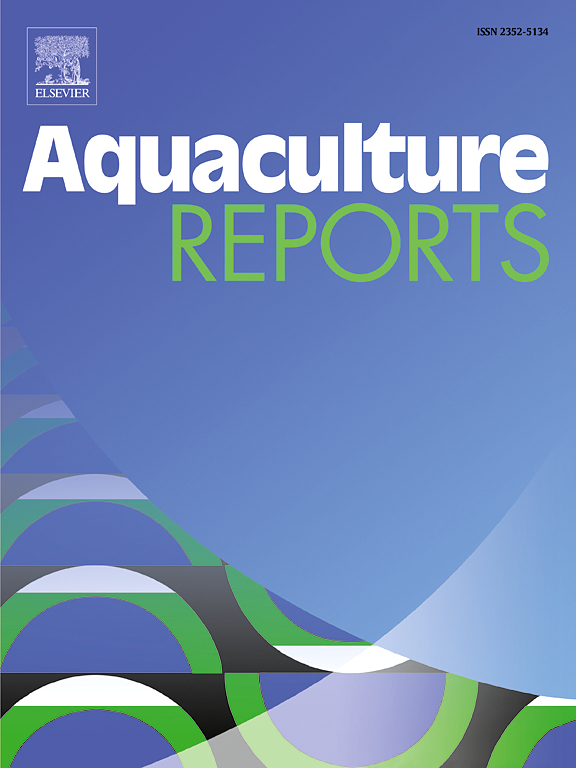Effects of multi-wavelength ultraviolet radiation on the inactivation and reactivation of Escherichia coli in recirculating water system
IF 3.2
2区 农林科学
Q1 FISHERIES
引用次数: 0
Abstract
Ultraviolet (UV) disinfection plays a crucial role in controlling large-scale outbreaks disease in aquaculture. As a safe and efficient new light source, ultraviolet light-emitting diode (UV-LED) can combine specific wavelengths. The effects of the combination of UVC-LED (275 nm) and UVA-LED (365 nm) on the elimination and reactivation of Escherichia coli (E. coli) were investigated in this study. The results showed that UVC-LED could effectively inactivate E. coli, while UVA-LED had a limited effect E. coli removal. The inactivation of bacteria increased with the UVC-LED dose. It was found that UVA-LED pre-treatment improved the removal of E. coli in the combined treatment. The combination of UVA-LED followed by UVC-LED irradiation exhibited a synergistic effect. UVA irradiation at 3240 mJ/cm2 followed by 750 mJ/cm2 UVC irradiation resulted in a 3.18 log inactivation, which was about 2 log higher than that achieved by 750 mJ/cm2 UVC irradiation alone. Following disinfection, E. coli exhibited reactivation, with the dark repair rate exceeding that of photoreactivation. The bacterial reactivation rate increased with duration after UVC irradiation. High dose sequential UVA-UVC irradiation can effectively inhibit bacterial reactivation, delaying the reactivation. After 3240 mJ/cm2 UVA followed by 750 mJ/cm2 UVC irradiation, the dark repair rate of E. coli reached a minimum of 193.81 ± 5.85 % at 72 h. This study revealed the effective inactivation of bacteria through the combination of UVA-LED and UVC-LED, clarifying the mechanisms and influencing factors associated with inactivation and reactivation during UV synergistic disinfection. Simulate the actual water treatment process more realistically. And the bacterial reactivation can be effectively inhibited by high-dose UV irradiation and avoidance of visible light after irradiation. Our findings provide valuable insights for the design and operation of UV disinfection in recirculating aquaculture, it also clearly presenting the challenges in the actual water treatment process.
求助全文
约1分钟内获得全文
求助全文
来源期刊

Aquaculture Reports
Agricultural and Biological Sciences-Animal Science and Zoology
CiteScore
5.90
自引率
8.10%
发文量
469
审稿时长
77 days
期刊介绍:
Aquaculture Reports will publish original research papers and reviews documenting outstanding science with a regional context and focus, answering the need for high quality information on novel species, systems and regions in emerging areas of aquaculture research and development, such as integrated multi-trophic aquaculture, urban aquaculture, ornamental, unfed aquaculture, offshore aquaculture and others. Papers having industry research as priority and encompassing product development research or current industry practice are encouraged.
 求助内容:
求助内容: 应助结果提醒方式:
应助结果提醒方式:


